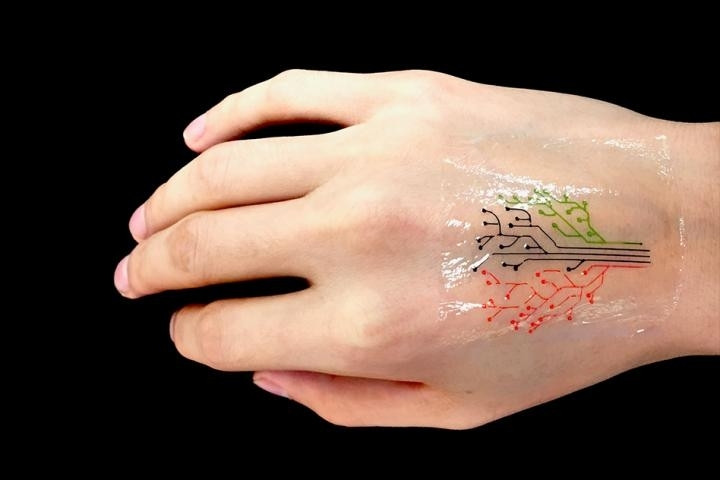This 3D-printed 'living tattoo' reacts to its surroundings
MIT's 3D-printed sensor lights up on detecting certain chemical compounds.

MIT researchers have developed a "living tattoo" – a 3D-printed patch that uses an ink made from living cells and can respond to a range of stimuli.
The new tattoo goes beyond conventional smart devices and uses genetically modified bacterial cells to serve as a living sensor. Essentially, it is the ink of the tattoo that lights up on coming in contact with certain chemicals.
To develop the ink and then print the tattoo, the researchers first had to determine what kind of cell would survive the forces applied to ink as it is pushed through a 3D printer's nozzle.
Once they found bacterial cells were the ideal candidate, they genetically programmed the cells to light up and mixed them with a specific type of hydrogel and nutrients required to maintain their functionality.
Finally, the ink with living cells was 3D printed to create a tattoo with a tree-like pattern. Each branch of the tree carried bacterial cells responsive to different types of chemicals.
When tested on a person's hand smeared with multiple chemical compounds, the tree patterns on the tattoo lit up. The process took some hours, but the branches started glowing as soon as the bacteria sensed their corresponding chemicals.
Moving ahead, these bacteria-loaded patches could lead to the development of living sensors with cells programmed to detect certain inflammatory biomarkers. Other things could include patches reactive to temperature or air quality and drug capsules with cells modified to release compounds like glucose over time.
"We can use bacterial cells like workers in a 3-D factory," says Hyunwoo Yuk, one of the co-authors of the study published in journal Advanced Materials.
"They can be engineered to produce drugs within a 3-D scaffold, and applications should not be confined to epidermal devices. As long as the fabrication method and approach are viable, applications such as implants and ingestibles should be possible."





















